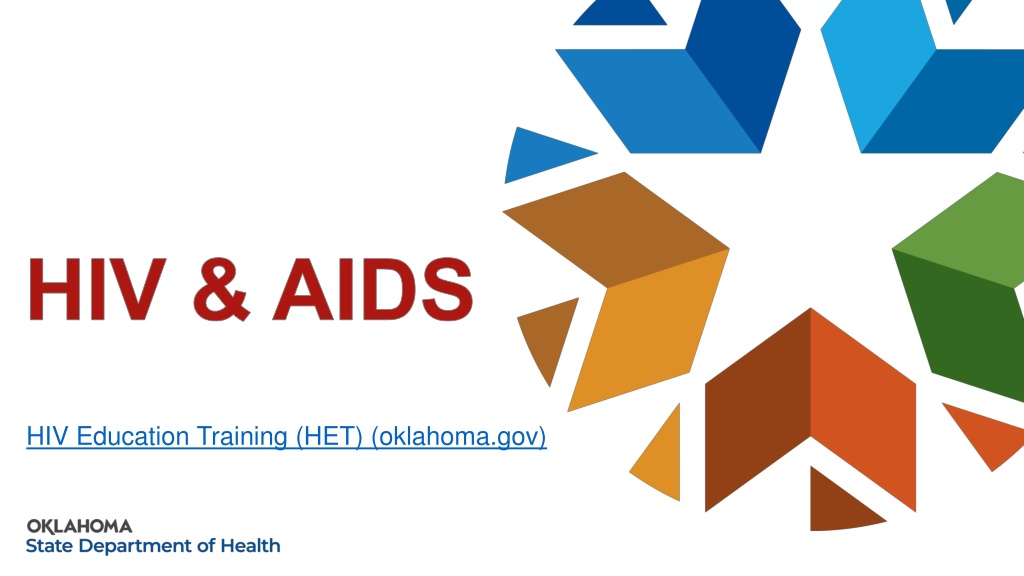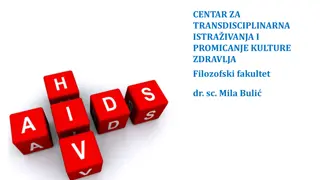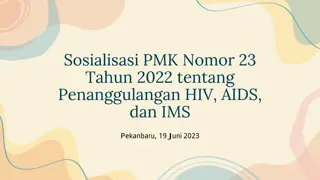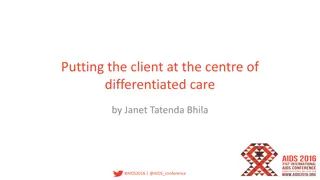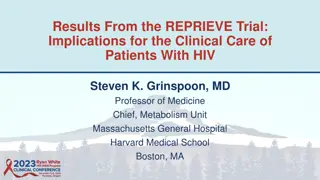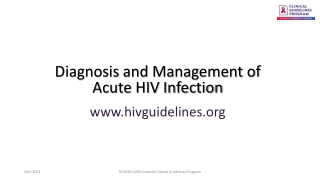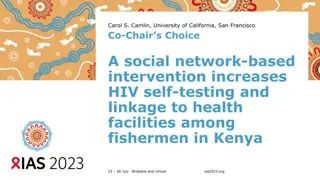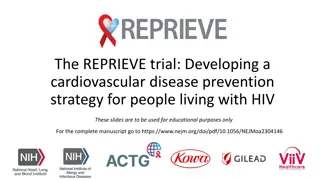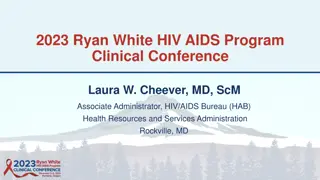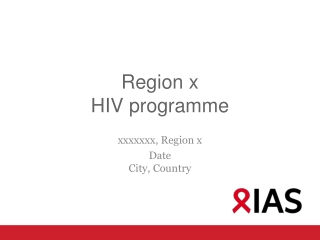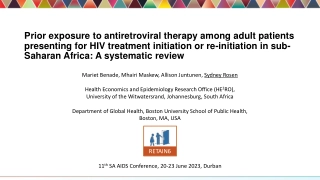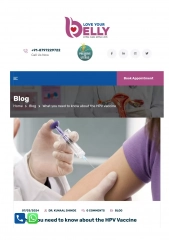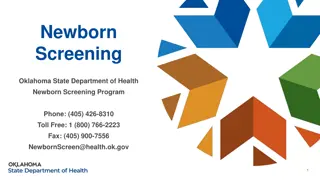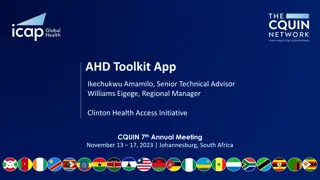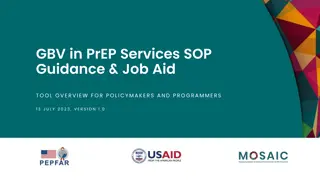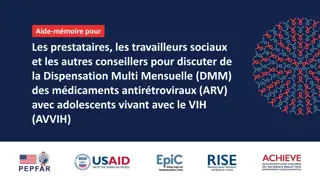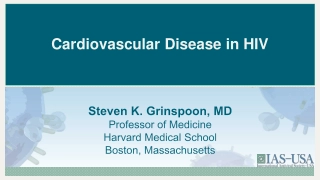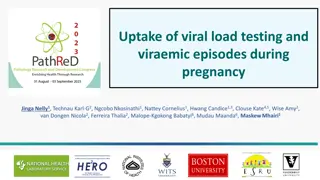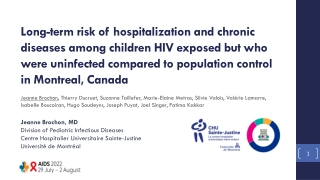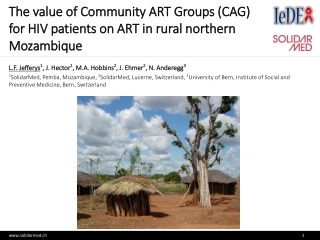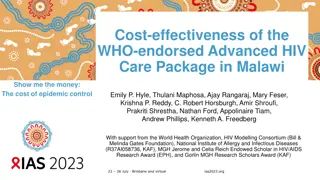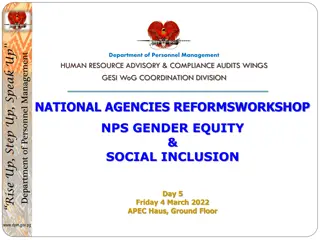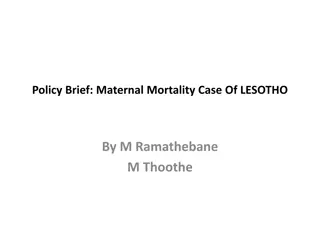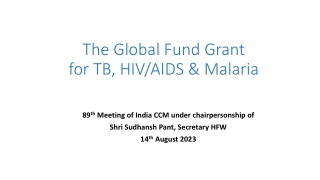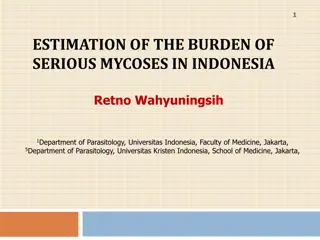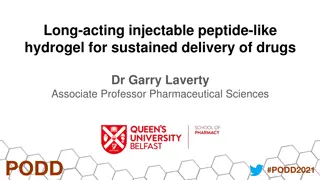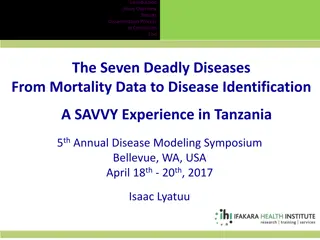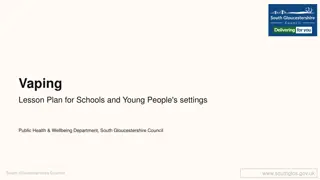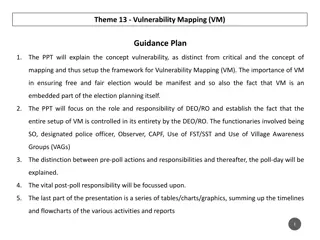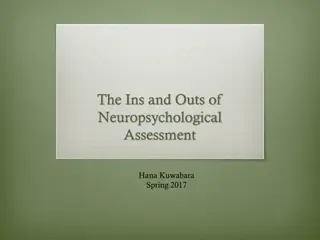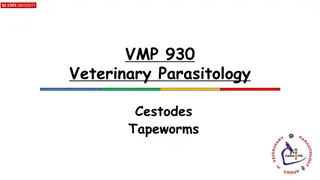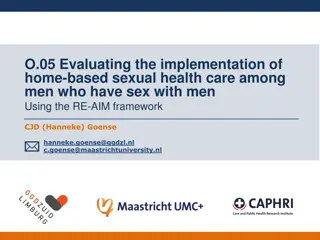Understanding HIV and AIDS: Facts and Importance in Oklahoma
Explore essential information on HIV and AIDS, including transmission myths, definitions, the importance of people-first language, and statistics specific to Oklahoma. Learn about the impact of HIV/AIDS in the United States and why accurate understanding and language are crucial in addressing this public health concern.
- HIV/AIDS awareness
- Oklahoma health education
- transmission myths
- people-first language
- United States statistics
Understanding HIV and AIDS: Facts and Importance in Oklahoma
PowerPoint presentation about 'Understanding HIV and AIDS: Facts and Importance in Oklahoma'. This presentation describes the topic on Explore essential information on HIV and AIDS, including transmission myths, definitions, the importance of people-first language, and statistics specific to Oklahoma. Learn about the impact of HIV/AIDS in the United States and why accurate understanding and language are crucial in addressing this public health concern.. Download this presentation absolutely free.
Presentation Transcript
HIV & AIDS HIV Education Training (HET) (oklahoma.gov)
HIV: True or False? 1. 2. I'm HIV-positive, now my life is OVER. I CAN get HIV by being around people who are HIV- positive. I would NOT be able to tell if my partner or I were HIV- positive. I CAN get HIV from mosquitoes. I'm straight and don't inject drugs, so I CANNOT get HIV. I CAN get HIV from oral sex. My partner and I are both HIV-positive, so there is NO NEED to use condoms. 3. 4. 5. 6. 7. 2 Oklahoma State Department of Health | HIV 101 | 2023
What is HIV? Human Immunodeficiency Virus A virusspread through body fluids and affects specific cells of the immune system, called CD4 cells or T cells. A virus that kills the CD4 cells (T cells) damaging the immune system. A virus that replicatesinside the human body, so it must invade a healthy cell in the body to survive. 3 Oklahoma State Department of Health | HIV 101 | 2023
What is AIDS? Positive HIV Test + Very low CD4 count (<200 cell/mm3 ) OR presence of specific cancers or opportunistic infections = AIDS AIDS occurs in the late stages of the HIVinfection process. Once diagnosed, the body has a hard time fighting diseases and certain cancers. NO cure for AIDS, but there is treatment. 4 Oklahoma State Department of Health | HIV 101 | 2023
People-First Language UN UN AIDS AIDS Terminology Terminology Guidelines Guidelines https://www.unaids.org/sites/default/files/media_asset/2015_terminology_guidelines_en.pdf 5 Oklahoma State Department of Health | HIV 101 | 2023
Why is This Important? In the U.S. 30,635 people diagnosed with HIV (2020). 17,032 people diagnosed with AIDS (2018). 6 Oklahoma State Department of Health | HIV 101 | 2023
United States, 2020 N=30,635 Oklahoma, 2020 N=345 <1% <1% <1% 2% Diagnoses of HIV Cases, by Age 1% 8% 20% 23% 12% 13% 24% 20% 37% 33% Under 14 Age 35-44 Age 15-24 Age 45-54 Age 25-34 Age 55-64 Oklahoma State Department of Health | HIV 101 | 2023 Age 65 over 7
United States, 2020 N=30,635 Oklahoma, 2020 N=345 Diagnoses of HIV Cases, by Transmission <1% Men who have sex with men (MSM) 22% 27% Injection drug use (IDU) 4% 58% 2% 7% 68% MSM and IDU 6% 7% Heterosexual contact Oklahoma State Department of Health | HIV 101 | 2023 8 Other/Unknown
United States, 2019 N=36,801 Oklahoma, 2020 N=345 <1% American Indian /Alaskan Native 9%, OK 1% 2% Diagnoses of HIV Cases, by Race/Ethnicity 8% Asian/Pacific Islander 3%, OK 25% Black 42% 24% 7%, OK 42% 2% Hispanic/Latino 11%, OK 29% Multiple Races 6%, OK 15% 10% White 64%, OK Oklahoma State Department of Health | HIV 101 | 2023 9
How is HIV Spread? HIV is passed from person to person through the exchange of body fluids. THREE Ways: 1. Unprotected sex (anal, vaginal, or oral) with People Living With HIV (PLWH) 2. Blood to blood contact 3. Exposure to HIV before or during birth or through breastfeeding 10 Oklahoma State Department of Health | HIV 101 | 2023
What Fluids Can Transmit HIV? Blood Rectal fluids Semen Vaginal fluids Breast Milk 11 Oklahoma State Department of Health | HIV 101 | 2023
How does HIV Enter the Body? Mouth Nose Eyes Vagina Penis Anus Open Skin 12 Oklahoma State Department of Health | HIV 101 | 2023
Symptoms of HIV Many people who have HIV have NO symptoms at all for 10 years or more. It is estimated158,500 (13%) people in U.S. have HIV, butdo not know it. Symptomsvary from person to person. Some people who have HIV report having flu-like symptoms 2-4 weeks after exposure. 13 Oklahoma State Department of Health | HIV 101 | 2023
Viral Load & CD4 Count CD4 (T4) Count Number of white blood cells in the blood Viral Load Amount of HIV in the blood 14 Oklahoma State Department of Health | HIV 101 | 2023
Window Period The period of time after someone may have been exposed to HIV, but before a test can detect it (up to three months). IMMEDIATELY INFECTIOUS 15 Oklahoma State Department of Health | HIV 101 | 2023
What is the Window Period ? 16 Oklahoma State Department of Health | HIV 101 | 2023
Viral Load & CD4 Count Graph AIDS Oklahoma State Department of Health | HIV 101 | 2023 17
What does a HIV Test Mean? Positive + Negative - HIVantibody found. Have the virus and can pass to others. Need to begintreatment immediately. NoHIVantibody found. May not have HIV (consider the window period). Retest in three months. 18 Oklahoma State Department of Health | HIV 101 | 2023
Opportunistic Infections (OIs) People with healthy immune systems can be exposed to certain viruses and have no reaction. HOWEVER PLWH can face serious threats from the same viruses. Opportunistic Infections (OIs) are infections that occur more frequently and are more severe in individuals with weakened immune systems including people living with HIV. Oklahoma State Department of Health | HIV 101 | 2023 19
STIs & HIV The presence of a STIincreasesthe probability of Acquiring HIV & Transmitting HIV. WHY? Compromised immune system Additional STIs Irritation/inflammation of mucus membranes 20 Oklahoma State Department of Health | HIV 101 | 2023
HIV Treatment NewlyDiagnosed?START TREATMENT! TREATMENT BENEFITS your own health and the health of others Because of better treatments, PLWH are now living longer and with a better quality of life than ever before. 21 Oklahoma State Department of Health | HIV 101 | 2023
Treatment as Prevention PLWH with an Undetectable viral load Cannot Transmit HIV to others! However, Medication CAN be: Expensive $379,668 Lifetime (60% discount) ($597,300 undiscounted) Complicated may take multiple pills at different times of the day Toxic negative side effects may occur Ineffective not all strains respond the same Oklahoma State Department of Health | HIV 101 | 2023 22
U=U UNDETECTABLE = UNTRANSMITTABLE Launched in 2016 by PLWH. Promotes control of HIV by preventingHIVtransmission and reducing stigma towards PLWH. PLWH and taking ART are considered undetectable when levels of virus in the body are too low to detect, by lab tests.* As long as people stick to their treatment and are consistently monitored, PLWH are unable to transmit virus to others, after6 months of viral suppression, through sex. *The person still has HIV. 23 Oklahoma State Department of Health | HIV 101 | 2023
Reducing the Risk NO RISK Abstinence from Sex Abstinence from Injection Drugs Mutual Monogamy w/STI Negative Partner REDUCED RISK Protected Sex Correctly and Consistently Fewer Sexual Partners Never Sharing Needles or Works Regular HIV/STI Testing Oklahoma State Department of Health | HIV 101 | 2023 24
PrEP Pre-Exposure Prophylaxis (PrEP): daily medicine can prevent HIV from making copies of itself in the body. PrEP is only prescribed for people who are HIV-negative and who are at ongoing substantial risk of getting HIV. PrEPreduces the risk of getting HIV when taken consistently: by about 99% through sex at least 74% among People Who Inject Drugs (PWID) 25 Oklahoma State Department of Health | HIV 101 | 2023
PEP Post-Exposure Prophylaxis (PEP): a 28-day regimen of HIV medicine, started within 72 hours, of possible exposure to HIV to prevent the virus from making copies of itself in the body. PEP is only prescribed for HIV-negative individuals who believe they were exposed to HIV, such as, during sex, shared needles (works), or were sexually assaulted. PEP is effective in preventing HIV, butnot 100%. Every time use condoms. Always use safe injection practices. Oklahoma State Department of Health | HIV 101 | 2023 26
External (Male) Condoms More than 98% effective when used correctly and consistently Latex: Most common and effective Non-Latex: Polyurethane, Polyisoprene Natural Membrane: Lambskin (NOT protect against HIV and STIs) 27 Oklahoma State Department of Health | HIV 101 | 2023
Incorrect External Condom Use 1 DO NOT: Reuse a condom. Useexpired condoms. Unroll the condom before putting it on the penis. Leave condoms in hot or extreme cold places (wallet, car, etc.). 28 Oklahoma State Department of Health | HIV 101 | 2023
Incorrect External Condom Use 2 DO NOT: Useoil-based products (oils, hand lotion or Vaseline) as lubricants with latex condoms. Use your fingernails, scissors or teeth to open the wrapper. Use more than one condom at a time, including an internal AND external condom ( double wrapping ). 29 Oklahoma State Department of Health | HIV 101 | 2023
Correct External Condom Use DO: Keep condoms in a cool, dry place. Put condom on an erect/hard penis before genital contact. Hold the condom in place at the base of the penis before withdrawing (pulling out) after sex. Throw the condom away after it has been used in the trash. Uselubrication of Water-based or Silicone and apply as often as needed to reduce potential tears in the condom. Oklahoma State Department of Health | HIV 101 | 2023 30
Internal (Female) Condom Worninside the vagina or anus Thicker, more tear-resistant Alwayslatex-free Wider opening covers more of the external area Oklahoma State Department of Health | HIV 101 | 2023 31
Dental Dams Thin, square pieces of latex Used for oral sex (NOT on a penis) Could make your own dental dam (from a condom, latex glove, or non-microwavable plastic wrap) Oklahoma State Department of Health | HIV 101 | 2023 32
Where to Get Tested? https://gettested.cdc.gov www.stdcheck.com Community-Based Organizations Local Health Departments www.health.ok.gov Oklahoma State Department of Health | HIV 101 | 2023 33
Resources www.cdc.gov www.hiv.gov www.healthfinder.gov www.plannedparenthood.org www.stophiv.org www.iwannaknow.org Oklahoma HIV/AIDS Hotline: 1-800-535-2437 34 Oklahoma State Department of Health | HIV 101 | 2023
HIV & AIDS HIV & AIDS Questions? Oklahoma State Department of Health | HIV 101 | 2023 35
